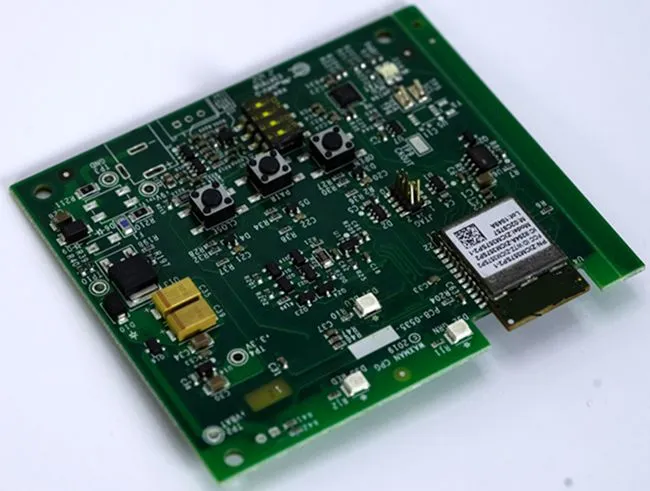Factors Influencing Custom PCB Board Costs
Board Size and Layer Count
The physical dimensions and number of layers in a custom PCB board significantly impact its cost. Larger boards require more raw materials and processing time, directly affecting the price. Similarly, multi-layer boards are more expensive due to the increased complexity in manufacturing and the additional materials needed. For IoT and smart devices, which often prioritize compact designs, smaller boards may be preferable, but the trade-off between size and functionality must be carefully considered.
Material Selection
The choice of substrate material plays a crucial role in determining the cost of a custom PCB board. Standard FR-4 is generally the most cost-effective option, suitable for many IoT applications. However, high-performance materials like Rogers or Taconic, which offer better electrical properties and thermal stability, come at a premium. These advanced materials might be necessary for smart devices operating in extreme conditions or requiring superior signal integrity, but they will increase the overall cost of the PCB.
Component Density and Complexity
The density and complexity of components on a custom PCB board directly influence its cost. IoT and smart devices often require high-density designs to achieve compact form factors, which can increase manufacturing complexity. Fine-pitch components, blind and buried vias, and advanced surface finishes all contribute to higher costs. However, these features may be essential for achieving the desired functionality and performance in sophisticated smart devices.
Manufacturing Processes and Their Impact on Cost
Prototype vs. Production Runs
The cost per board varies significantly between prototype and production runs. Prototyping custom PCB boards for IoT and smart devices typically involves higher per-unit costs due to the small quantities and potential design iterations. As production volumes increase, economies of scale come into play, reducing the cost per board. However, the initial setup costs for high-volume production can be substantial, especially for complex designs requiring specialized equipment or processes.
Manufacturing Technologies
Advanced manufacturing technologies can both increase costs and improve quality. For instance, laser direct imaging (LDI) offers superior precision for fine-pitch designs common in IoT devices but comes at a higher cost compared to traditional photolithography. Similarly, automated optical inspection (AOI) and X-ray inspection enhance quality control but add to the overall manufacturing expenses. These technologies are often necessary for ensuring the reliability of custom PCB boards in smart devices, justifying the additional cost.
Special Requirements and Certifications
IoT and smart devices may require special certifications or compliance with industry standards, which can impact PCB costs. For example, medical IoT devices might need to meet stringent FDA requirements, while automotive applications must adhere to IATF 16949 standards. These certifications often necessitate additional testing, documentation, and quality control measures, all of which contribute to the final cost of the custom PCB board.
Strategies for Cost Optimization
Design for Manufacturability (DFM)
Implementing DFM principles during the design phase can significantly reduce the cost of custom PCB boards for IoT and smart devices. This approach involves optimizing the design to simplify manufacturing processes, reduce material waste, and improve yield rates. For instance, standardizing via sizes, maintaining adequate clearances, and optimizing component placement can streamline production and reduce costs without compromising functionality.
Volume Pricing and Supplier Relationships
Establishing strong relationships with PCB manufacturers and leveraging volume pricing can lead to substantial cost savings. Many manufacturers offer tiered pricing based on order quantities, which can be advantageous for IoT products expected to scale quickly. Additionally, working closely with suppliers can provide insights into cost-effective alternatives for materials or processes, potentially reducing overall expenses without sacrificing quality.
Balancing Performance and Cost
Finding the right balance between performance and cost is crucial in IoT and smart device development. While high-end materials and advanced manufacturing processes can enhance performance, they may not always be necessary for every application. Carefully evaluating the specific requirements of your device and identifying areas where cost-effective alternatives can be used without compromising essential functionality can lead to significant savings in custom PCB board production.
Conclusion
Calculating the cost of custom PCB boards for IoT and smart devices requires a comprehensive understanding of various factors, from design complexity to manufacturing processes. By carefully considering each aspect and implementing cost-optimization strategies, developers can achieve the desired balance between performance and affordability. When seeking a reliable custom PCB board supplier or manufacturer, it's essential to partner with experienced providers who offer competitive pricing without compromising on quality. Engaging with a reputable PCB manufacturer early in the design process can provide valuable insights into cost-effective solutions tailored to your specific IoT or smart device requirements.
FAQ
What is the average cost range for custom PCB boards in IoT devices?
The cost can vary widely, typically ranging from $10 to $100+ per board, depending on complexity and volume.
How does board size affect PCB cost?
Larger boards generally cost more due to increased material usage and processing time.
Can I reduce costs by using fewer layers in my PCB design?
Yes, fewer layers usually result in lower costs, but this may impact functionality and signal integrity.
How much do special finishes like ENIG add to PCB costs?
Special finishes can increase costs by 10-30%, but often provide better reliability and performance.
Expert Custom PCB Board Manufacturing for IoT and Smart Devices | Ring PCB
Ring PCB specializes in producing high-quality custom PCB boards tailored for IoT and smart device applications. Our state-of-the-art manufacturing facility ensures precision and reliability in every board we produce. With our expertise in high-density designs and advanced manufacturing techniques, we offer cost-effective solutions without compromising on performance. Contact us at [email protected] to discuss your custom PCB requirements and experience the advantage of working with a leading PCB manufacturer and supplier.
References
1. Johnson, E. (2023). "Advanced PCB Design Techniques for IoT Devices." IEEE Transactions on Electronics Manufacturing.
2. Smith, A. et al. (2022). "Cost Analysis of Multi-Layer PCBs in Smart Device Production." Journal of Electronics Manufacturing.
3. Brown, R. (2021). "Material Selection Strategies for High-Performance IoT PCBs." International Conference on Electronic Components and Technology.
4. Lee, S. and Park, J. (2023). "Optimization of PCB Manufacturing Processes for Smart Devices." International Journal of Industrial Engineering.
5. Garcia, M. (2022). "Economic Impact of Design for Manufacturability in IoT PCB Production." IEEE Internet of Things Journal.






